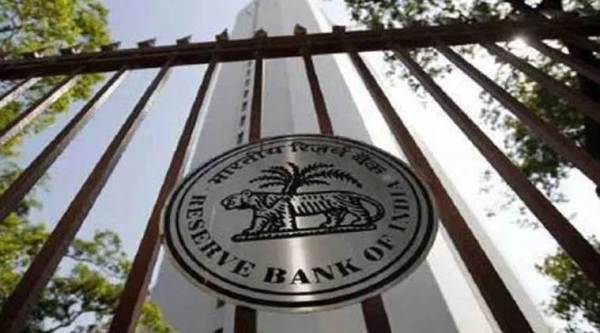 Private sector banks registered double-digit credit growth of 16.5 per cent in September 2019. (Representational image)
Private sector banks registered double-digit credit growth of 16.5 per cent in September 2019. (Representational image)
A Reserve Bank of India (RBI) report released on Friday showed that the worst may not be over for banks on the bad loan front as gross non-performing asset (GNPA) ratio of banks may increase to 9.9 per cent by September 2020 from 9.3 per cent in September 2019. The GNPA ratio of banks stood at 9.3 per cent in March 2019, the RBI said in its Financial Stability Report (FSR).
It noted that banks’ credit growth remained subdued at 8.7 per cent year-on-year in September 2019, down from 13.2 per cent in March 2019. Private sector banks registered double-digit credit growth of 16.5 per cent in September 2019. “Given the weakening economic growth, the underlying credit buoyancy and its nuances are of relevance,” the report said.
Even as banks have started pursuing recovery of loans and sought resolution under the Insolvency and Bankruptcy Code, the central bank’s report indicates that the trend of rising NPAs is yet to be firmly arrested. “The stress tests indicate that under the baseline scenario, the GNPA ratios of banks may increase to 9.9 per cent by September 2020, due to change in macroeconomic scenario, marginal increase in slippages and the denominator effect of declining credit growth,” it said. State-run banks’ GNPA ratios may increase to 13.2 per cent by September 2020 from 12.7 per cent in September 2019, whereas for private banks it may climb to 4.2 per cent from 3.9 per cent, under the stress scenario, it said.
In the event of severe stress, GNPAs may rise to 10.5 per cent by September 2020, the report said. The capital adequacy ratio for a clutch of 53 banks, could slip to levels of 14.1 per cent a year down the line from 14.9 per cent currently in a baseline scenario. It noted while the banking system has shown signs of stabilisation, state-owned banks’ performance needs to improve and they need efforts to build buffers against disproportionate operational risk losses.
The central bank wrote that NBFCs reported stress in asset quality during H1 2019-20 with the gross NPA ratio going up from 6.1 per cent as at end-March to 6.3 per cent as at end-September. The net NPA ratio, however, remained steady at 3.4 per cent during this time. As of end-September 2019, the capital adequacy of the NBFC sector stood at 19.5 per cent, lower than 20 per cent as of end-March 2019.
The foreign banks’ gross bad loans may increase to 3.1 per cent from 2.9 per cent in September 2019. The aggregate provision coverage ratio (PCR) of all banks rose to 61.5 per cent in September 2019 from 60.5 per cent in March 2019. PCRs of both state-run banks and private banks increased in September 2019. “Following the recapitalisation of state-run by the government, banks capital to risk-weighted assets ratio (CRAR) improved to 15.1 per cent in September 2019 from 14.3 per cent in March 2019,” the report said.
The state-run banks’ CRAR improved to 13.5 per cent from 12.2 per cent during the same period. Bank-wise distribution of asset quality showed that while 24 banks had GNPA ratios of under 5 per cent, four banks had GNPA ratios higher than 20 per cent in September 2019.
The asset quality of agriculture and services sectors, as measured by their GNPA ratios, deteriorated to 10.1 per cent in September 2019 as compared to around 8 per cent in March 2019. For the industry sector, the slippages during the period declined to 3.79 per cent from around 5 per cent in March 2019.
[“source=indianexpress”]
